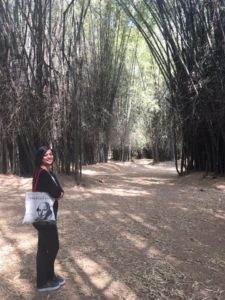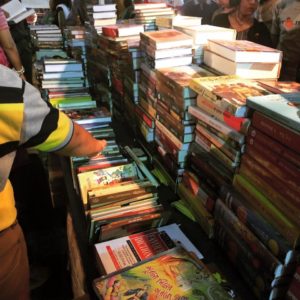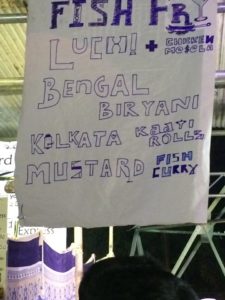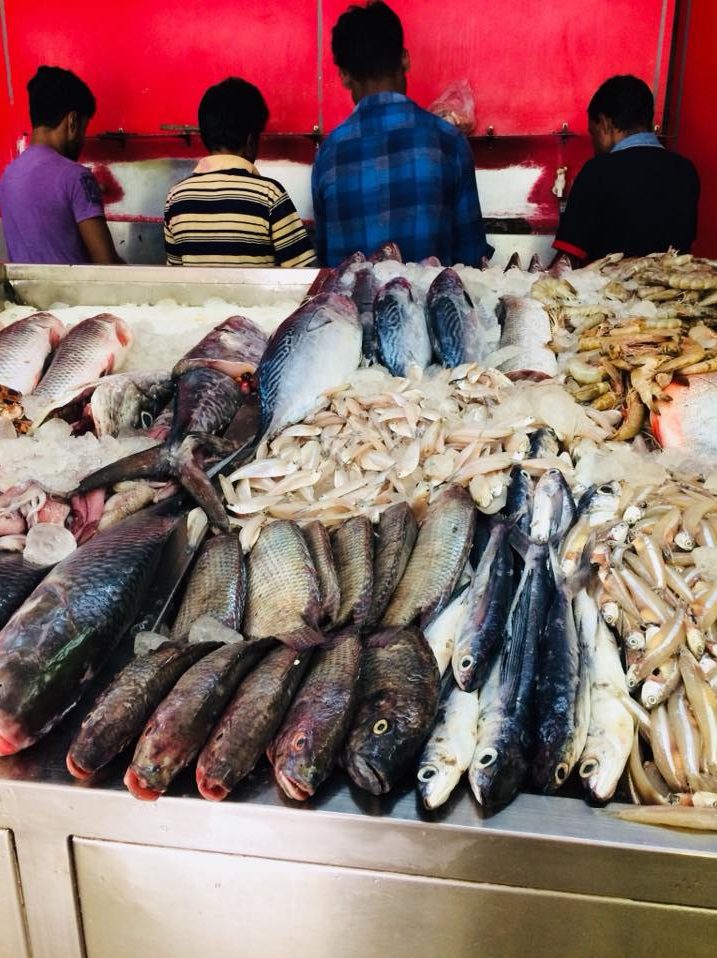A few days back, we were on one of the busiest roads of Koramangala, a once leafy residential part of Bangalore, but now overrun with offices and eateries. ‘Aami Bangali,’ I announced. My husband, who is generally used to my sudden, random pronouncements was taken somewhat by surprise. An eyebrow flickered questioningly and in reply I pointed to a building by the side of the road. On the top floor hung a huge sign in yellow and red. Aami Bangali is the new Bengali restaurant in this para of restaurants.
I did a quick count and found there are now two Bengali sweet shops and at least five eateries serving Bengali food in an area of a few square kilometres. I guess all this makes it easier for people like us, living far from Bengal to suddenly announce Aami Bangali to unsuspecting partners.
We have lived in Bangalore for nearly 20 years now, watching it grow from a sleepy, laidback, green city that stopped in its tracks for afternoon siestas to a bustling metropolis ready to burst at its seams. I guess people like us are part of the problem—adding to the pollution and traffic and bringing in our alien tongue and food habits here. Yet, in all my years here, never have I heard a Kannadiga person complain about Bengalis. And we do seem to be making up quite a bit of the Bengal in Bengaluru.
Walk down any road anywhere now, or step into a mall and one is bound to hear Bangla being spoken, or to see a portly Bengali gentleman walking around with his long-haired, doe eyed Bengali wife or girlfriend with him. Come the days of Durga Puja, the entire Bengali population seems to descend on to the puja spots. And suddenly, everyone knows what is anjali, how to stand in queue for the prasad, when the dhakis will strike up their beats, when the yell will come saying, phool basketey deben, chhurben na (place the flowers in the baskets, don’t throw them) and of course hear the familiar sizzling smell of rolls and phuchka and chop-cutlet-biriyani. The dhakai and jamdani saris appear with a vengeance as do the colourful embroidered kurtas with lines of poetry on the men. For four days there are these pools of light and music and noise and ceremony where Bengalis of every hue and shape are welcomed. And then, with Bijoya, just as suddenly, we all melt away into our corners—into Koramanagala and JP Nagar and Sarjapur and Bellandur, where we dissolve into the bubbling pot of people from all corners of the country that Bangalore has become.

Bengalis have, of course, lived in Bangalore for decades. Being a centre of learning as well as public sector undertakings, Bengalis have been settling here for a long time. In my own family, my husband’s grandfather taught at the Indian Institute of Science, and I have heard from my father-in-law tales of growing up in the Bangalore of the 50s. But the arrivals in the city now are perhaps different. They are students, studying in the various colleges. They are young bachelors, working their first jobs and struggling to adjust to the city’s gridlocks and public transport system and the food and the weather. They are young couples, working professionals in the many IT companies buying their homes on EMIs and bringing in their parents to live with them or to look after their newly born babies while they negotiate the pressures of the software industry.
Among them, there are people like us, who have lived here long enough to call it home, and yet feel the alien vibe at odd times. We chafe as much as anyone else at the narrow minded comments of the newcomers who refuse to learn the language and complain incessantly. We enjoy our Lalbaghs and Cubbon Parks and small neighbourhood darshinis and can eat our weight in anna saaru and anna huli and more. We have found our little fixes for those times when the urge for the food and the language and the culture become overwhelming with our Banchharam outlets, our fish shops selling ilish and rui and even Bengali bookshops lined with Saratchandras and Puja Barshikis.

Our offspring were born here and are growing up here, and they know Kolkata as a place to visit grandparents and Bangla a language they test out gingerly on their tongues. The other day we were at my son’s friend’s home on a dinner invitation. His friend is Bengali and his mother and I were chatting in Bangla, despairing over grades and school and schoolwork and teenage distractions. She said suddenly, ‘My son reads so much I don’t know what to do with him. He will read anything and he even desperately wants to read Rabindranath!’ In a rare fit of maternal boasting I burst out, ‘Mine taught himself to read Bangla when he was seven or eight with the help of his grandmother!’ All this while the boys chatted in English in the other room while tucking into homemade mutton biryani (with alu). With such small victories are our Bengali identity kept alive.
The conversation with fellow Bengalis in Bangalore usually fall into something of a pattern. Do you visit Kolkata often? Which pujo do you go to? Where do you buy your fish? In fact, the fish shops of Bangalore that sell ‘Bengali fish’ are a hot topic of conversation and their locations are traded like Pokemon cards at Bengali gatherings. Gone are the days when we could go to Russell Market on a whim for the fish—the traffic is enough to stop even the most intrepid fish buyer in his tracks. Now, there are small shops dotting many neighbourhoods that get overrun by enthusiastic Bengali men and women on weekends.
My Maharashtrian friend, who buys fish at such a shop, bore the brunt of the bossy fish buying Bengali man one day. She had chosen her bhetki and was getting it filleted when she was asked if she wants the head. No, she didn’t. Later, she described to me the hush that fell on the shop when she said no to the head. Giving up on the muro? How could she? The boys who prep the fish stood stock still as did the other customer. ‘But you must take it!’ this man burst out at her, horrified at such sacrilegious wastage. ‘But…’ she started. ‘No no, you must!’ he went on, eyes bulging. Worried she may be responsible for a coronary on the fish shop floor, she quickly dialled my number. ‘HeyIambuyingbhetkidoyouwantthehead?’ was what I heard when I picked up the phone. ‘Umm, yes,’ was all I could say before she quickly disconnected. And under the triumphant gaze of everyone there, she asked the head to be packed separately for her Bengali friend. The bossy fish buying man was satisfied as was the shopkeepers as was I. The muri ghonto did turn out rather fantastic.

And that is how I now buy bori and gobindo bhog rice and posto and more—in nooks and crannies in large supermarkets where one comes across these, and sometimes khoi and sometimes kasundi too. Having lived for most parts of my life outside Bengal, I don’t yearn much for many of these things, and yet, suddenly, the sight of fresh potol at the vegetable shop, the snatch of a few words in Bangla on the street, the drape of a cotton sari, the first bite into a shingara (not samosa), the tune of ei kothati money rekho that wafts unbidden to the mind when the skies lower with clouds and the cool Bangalore winds whip up the evening rain make me say, with no trace of irony, ‘Aami Bangali’.
(Cover photograph: finding ‘Bengali fish’ in Bangalore)
[Photographs courtesy: Sudeshna Shome Ghosh]


Comments are closed.